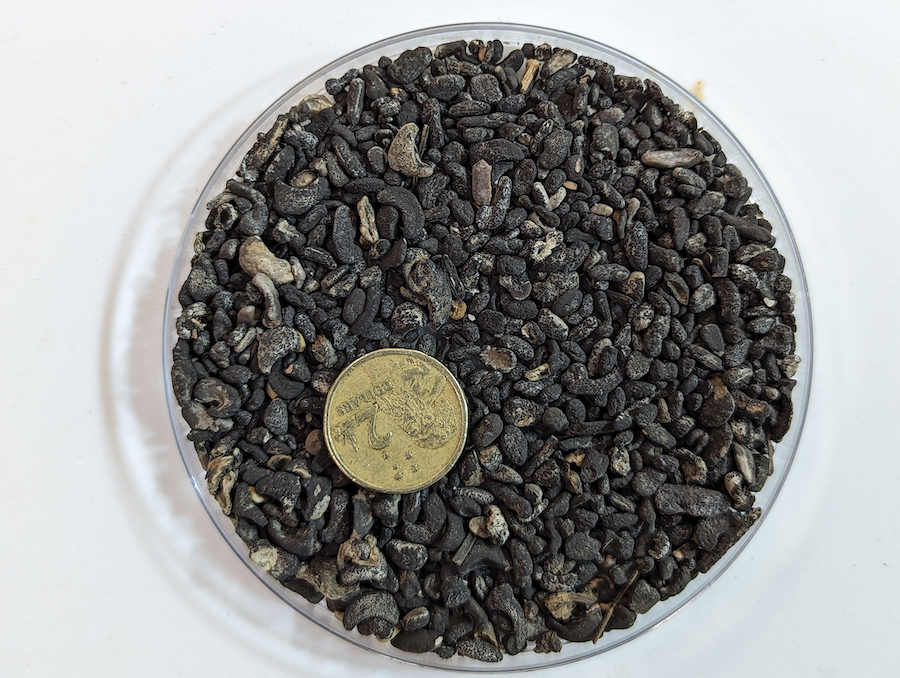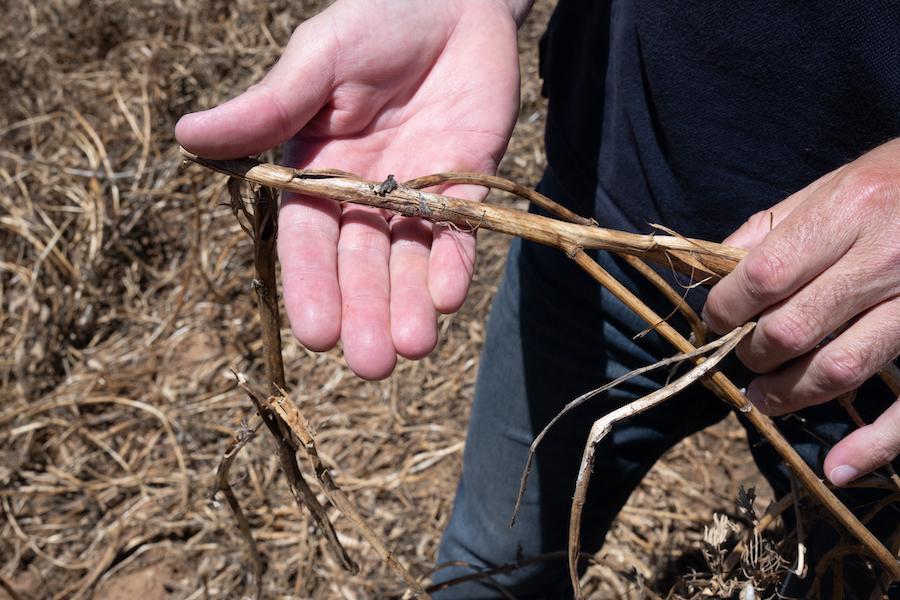Modern farming systems that direct drill into retained stubble are able to capture numerous productivity benefits. The stubble, however, can promote the build-up of certain fungal pathogens.
Among the most problematic are Sclerotinia species due to their ability to infect all broadacre crops and large numbers of weeds, with a total host range of about 400 plant species. Additionally, the fungi can form hard black, survival structures – called sclerotia – on and within stubble. Sclerotia are about the size of cloves and allow the fungi to survive in a dormant state in soil and plant residue for upward of five years.

Sclerotinia fungi can form survival structures called sclerotia that allow the pathogen to remain in a dormant state in soil and plant residue for upward of five years. Photo: NSW DPI
These two characteristics mean that Sclerotinia fungi can be ticking away, unseen, waiting to re-emerge when conditions are favourable – particularly prolonged wet conditions in late winter and spring. The fungi can then rapidly reach damaging levels within susceptible crops.
The yield losses due to Sclerotinia can be costly. Previous research has documented losses as high as 30 to 35 per cent in canola. And while canola is an especially good disease host, impacts can spill over to the next susceptible crop in a rotation.
For example, in preliminary findings, yield losses of up to 25 per cent were detected in narrow leafed lupin sown into previously infected canola stubble at Wagga Wagga in 2022. The same experiment also detected a staggering sclerotia production load estimated at up to 200 kilograms per hectare following the lupin crop. These results demonstrate the potential legacy-effect of a Sclerotinia epidemic on future crops in the rotation.
To better understand the cross-rotation impacts of the disease, GRDC has invested in a new national Sclerotinia project to study disease dynamics across entire cropping rotations and farming systems. Work commenced in 2022 led by the NSW Department of Primary Industries with the aim of developing strategies to reduce inoculum loads, manage disease outbreaks and reduce yield losses.

The Sclerotinia project will focus on field studies and include monitoring of commercial pulse crops and collection of infected pulse material to better understand infection pathways. Photo: Nicole Baxter
Given the scale of this project, the research is being undertaken as a collaboration that involves activities in SA, Victoria, NSW and Queensland. These studies will have a strong research focus on five pulse crops: lupin, faba bean, chickpea, lentil and peanut (see Table 1).
The project will focus on field studies in the northern and southern growing regions and include the monitoring of commercial pulse crops for disease development and collection of infected pulse material to better understand infection pathways. Measurements of the ‘in-crop’ incidence and severity of Sclerotinia disease will be taken and estimates of yield loss calculated.
As a picture emerges of in-field infection pathways, additional work will be undertaken. Included are glasshouse experiments that can mimic disease pathways from the field and allow for controlled testing of strategies to break or reduce disease transmission.
Laboratory studies will also be undertaken to further investigate the production of sclerotia from plant residues collected from the field to improve our understanding of sclerotia production in the field during non-host crop years.
Examples of potential new disease management strategies that will be tested through the life of this project include:
- practices to change crop canopy architecture or the timing of canopy development in order to delay or avoid disease onset;
- understanding the optimal timing of fungicide application for the different legumes; and
- modifications to crop rotations to avoid the build-up of sclerotia.
The project aims to have solid recommendations for growers available no later than 2026, with findings communicated as soon as they are available through channels that include GRDC Grower and Advisor Updates and Field Days, such as those conducted at the Wagga Wagga Agricultural Institute.
Table 1: A multi-state project to break Sclerotinia disease cycles across crop rotations is underway.
| PARTNER | CROP FOCUS | STUDY SITES |
|---|---|---|
Kurt Lindbeck, Ian Menz: NSW DPI – South Sean Bithell: NSW DPI – North | Lupin, chickpea, faba bean Chickpea | Southern NSW – South-west Slopes and Riverina Central NSW – Trangie |
Josh Fanning: Agriculture Victoria | Lentil, chickpea, lupin | Victoria – Wimmera and Mallee |
Steve Marcroft: Marcroft Grains Pathology | Canola | Victoria – Wimmera and Western District |
Sara Blake: SARDI | Lentil | SA – Mid North and Yorke Peninsula |
Kylie Wenham: University of Queensland | Peanut | Queensland – Darling Downs and Granite Belt |
More information: Kurt Lindbeck, Kurt.Lindbeck@dpi.nsw.gov.au

























































